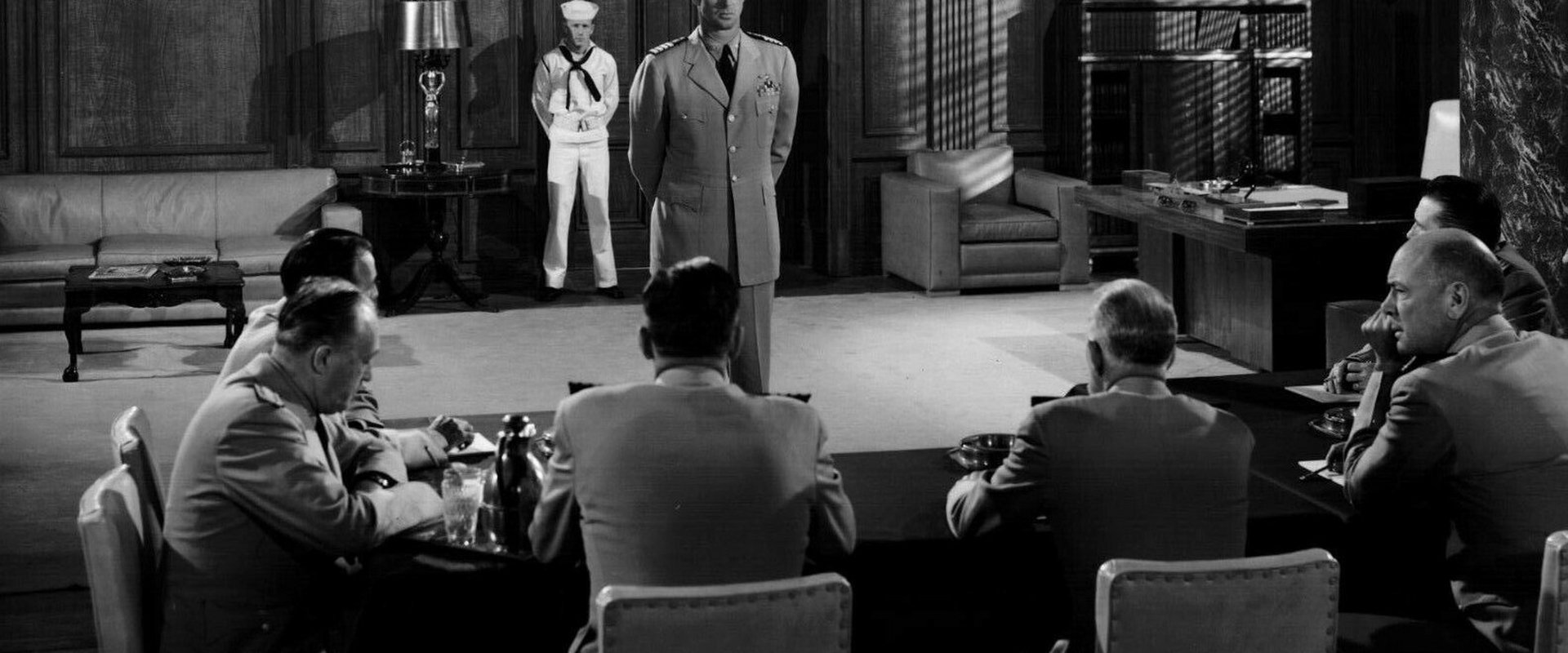The Eternal Sea
Biopic of Rear Adm. John M. Hoskins, U.S. Navy. During World War II, Capt. John Madison Hoskins of the U.S. Navy returns home for a short leave after spending two years at sea. In 1942, he is given command of the USS Hornet (CV-8). Unfortunately, news reaches him that the Hornet has recently been sunk by the Japanese. Without a ship, Hoskins is temporarily reassigned as an instructor at Quonset Point, Rhode Island. In 1944, Hoskins is finally sent to the front lines. He's given command of the USS Princeton (CVL-23) involved in the ongoing Philippines campaign. When Hoskins arrives to replace the current captain of the Princeton, as part of the routine rotation of skippers practiced by the Navy, he is told to assist the Princeton's captain rather than take over command of the ship. The reason being that the Princeton's skipper, Capt. William Buracker, is already briefed on the ongoing operation and it would take too much time for the Navy to bring Hoskins up to speed. However, Hoskins agrees to serve on the ship as prospective commanding officer under Buracker's command. During the battle operations, the Princeton is crippled by a Japanese dive-bomber. The resulting fire sets off explosions in the fuel and ammunition stores. Capt. Hoskins assists the crew in battling the raging fires but a huge explosion wounds him and severs his right foot. The Princeton is abandoned and sinks. Hoskins recovers at a naval hospital in Philadelphia where the new Princeton is being build. He is determined to learn to walk with a prosthetic foot and stay on in active duty. During the following months, Capt. Hoskins fights the Navy panel convened to retire him. He persuades the panel to allow him to remain on active duty but faces the prospect of being assigned to a permanent desk job. Nevertheless, Hoskins remains in the service and is totally surprised to learn that he is given command of the newly built USS Princeton (CV-37). Out of love and admiration, many servicemen and friends call him 'Uncle John' or 'Peg-Leg'. After the war, Hoskins is promoted to rear admiral and transferred to San Diego where he advocates the use of the new jet fighters on aircraft carriers. Despite the Navy's reluctance, Hoskins demonstrates to the Navy brass that jets can safely be used on the decks of the carriers. As a result, the Navy gives him command of the carrier division for aircraft operation at sea and he joins Admiral Struble's 7th Fleet. When the Korean War breaks out, Hoskins's idea of using jets on aircraft carriers proves to be valuable and efficient. In 1951, he's given the choice of two other important assignments but he declines. Looking forward to retirement, Hoskins requests and is assigned to the Military Air Transport Service where he coordinates logistics by air transport for all branches of service. Written by nufs68









